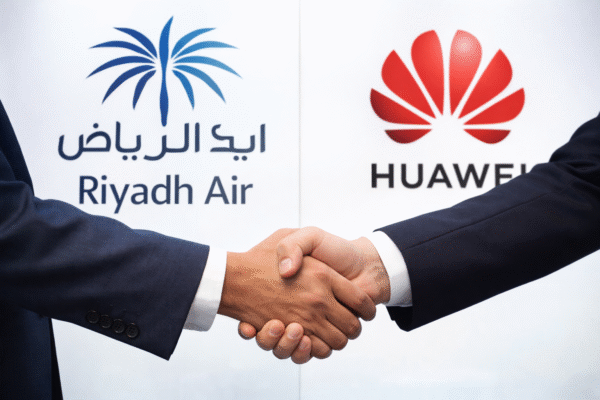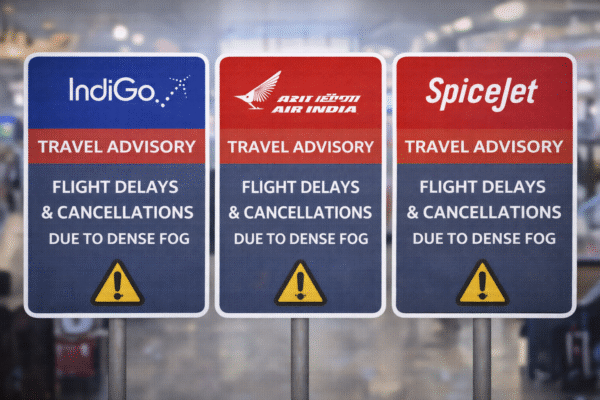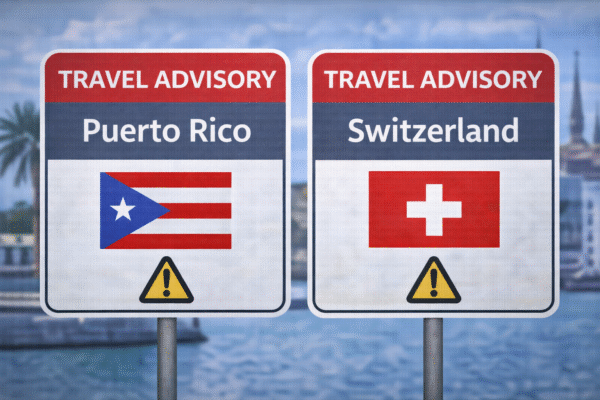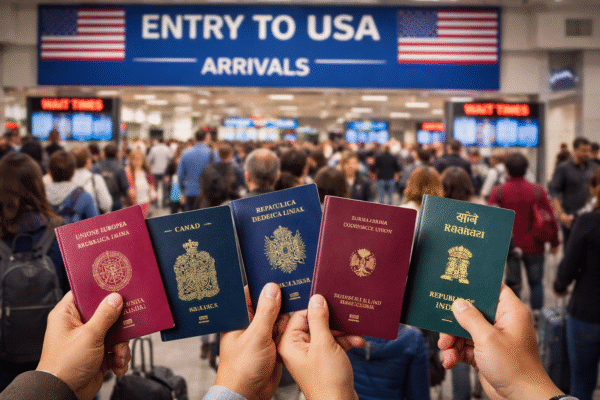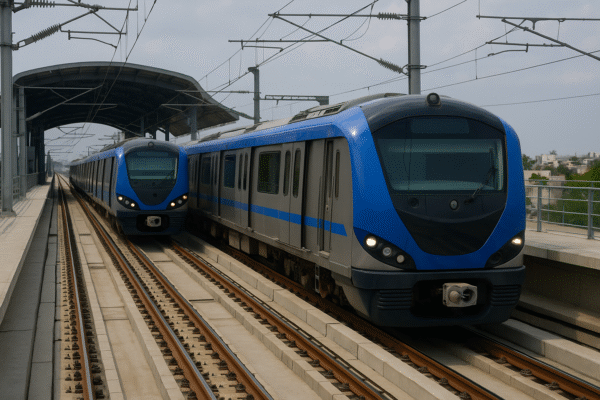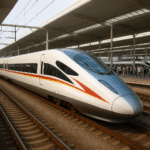Chennai Metro and MRTS Join Forces for Seamless Travel and Smarter Urban Connectivity
Chennai’s urban mobility landscape is set for a transformative leap as the Mass Rapid Transit System (MRTS) merges with the Chennai Metro Rail Limited (CMRL). Backed by the Railway Board’s in-principle approval, this integration will deliver a unified, efficient, and commuter-friendly transit network to serve one of India’s fastest-growing metropolitan populations.
The merger will introduce a single-ticketing system, enabling passengers to travel across both networks with just one ticket—simplifying daily commutes and significantly improving the commuter experience across the city.
MRTS Integration: Bridging the Past and the Future of Urban Transit
The MRTS corridor currently spans 19.34 km, running from Chennai Beach to Velachery, but has long grappled with underutilisation, aging infrastructure, and a lack of interconnectivity with the modern Chennai Metro system. This historic merger aims to address those challenges by integrating MRTS into the metro network, unlocking new potential for streamlined, multimodal urban mobility.
Once completed, the MRTS will become an integral part of Corridor 4 of the Chennai Metro Phase II, connecting Chennai Beach to St. Thomas Mount, and further extending toward Poonamallee. This corridor will link vital urban centres—residential, commercial, and industrial—and dramatically improve east-west and north-south transit across Chennai.
Single-Ticketing and Smart Travel: A Win for Commuters
The most immediate and visible benefit of the merger is the implementation of a unified ticketing system. This change will eliminate the need for multiple tickets or complicated transfers between MRTS and Metro services, allowing for hassle-free travel across the integrated network.
In addition, commuters will gain access to:
- Air-conditioned trains
- Real-time train tracking
- Elevated safety standards
- Better accessibility for persons with disabilities
- Well-designed interchange stations
These enhancements bring the MRTS up to modern transit standards, promising a far superior and inclusive commuting experience for residents and tourists alike.
A Strategic Move to Reduce Congestion and Carbon Emissions
With the city’s growing population—estimated to surpass 12 million by 2030—the merger will help reduce dependency on private vehicles, ease road congestion, and lower carbon emissions. The Tamil Nadu government, in collaboration with the Ministry of Housing and Urban Affairs (MoHUA), has prioritized this integration as a vital step toward meeting the city’s sustainable urban mobility goals.
Experts have long pointed to the inefficiencies caused by the separation of MRTS and Metro. The merger resolves these issues and aligns with India’s broader Smart Cities Mission and National Urban Transport Policy, which advocate for integrated, multimodal public transport systems in urban centres.
Economic Impact: Boosting Investment and Tourism in Chennai
The upgraded transit infrastructure is expected to boost tourism and investment in Chennai, making the city more attractive to domestic and international travellers. With easier access to key locations such as Marina Beach, Guindy Industrial Estate, T. Nagar, and IT hubs in Velachery and OMR, both tourists and professionals will benefit from better connectivity.
Improved public transport infrastructure often leads to increased economic activity. Local businesses, real estate developers, and retail centres along the corridor are likely to witness growth due to higher footfall and better accessibility. The integration will also open new avenues for Transit-Oriented Development (TOD) along the route.
Looking Ahead: Phase II of Chennai Metro and Multimodal Growth
The timing of the merger aligns strategically with Chennai Metro Phase II, which is already under construction. The expansion spans 118.9 km across three corridors, aiming to cover underserved areas and support last-mile connectivity through feeder services like electric buses and bike-sharing networks.
By integrating MRTS into the larger metro network, CMRL is laying the foundation for a comprehensive urban transport ecosystem. When completed, Chennai will boast one of the most interconnected public transport systems in India—capable of handling high volumes with efficiency and low environmental impact.
Government Support and Legal Roadmap
Following the Railway Board’s green light, the next steps in the integration process include:
- Asset transfer evaluations
- Financial and legal due diligence
- Operational handover
- Public outreach and rebranding
The Tamil Nadu government has expressed full support for the move, highlighting its importance to urban growth, environmental sustainability, and public convenience. The collaborative efforts between state and central authorities demonstrate a unified vision for future-ready infrastructure.
A Model for Indian Cities: National Relevance of the Chennai Merger
The merger is not just a regional development—it could serve as a national model for other Indian cities with fragmented urban transport systems. Cities like Mumbai, Bengaluru, and Hyderabad may consider similar integrations to unlock operational efficiencies and commuter benefits.
This move reinforces Chennai’s reputation as a trailblazer in urban transport innovation, putting the city at the forefront of sustainable urban planning and transit modernization.
Conclusion: A Game-Changer for Commuters and the City
The unification of MRTS with the Chennai Metro marks a watershed moment in the city’s transport history. Beyond convenience and efficiency, the merger symbolises progress, sustainability, and inclusive growth. It brings Chennai closer to its goal of becoming a smart, liveable, and commuter-friendly metropolis.
As the integration process moves forward, residents can look forward to a future where public transportation is no longer a hassle—but a seamless, reliable, and comfortable experience for all.
For more travel news like this, keep reading Global Travel Wire



